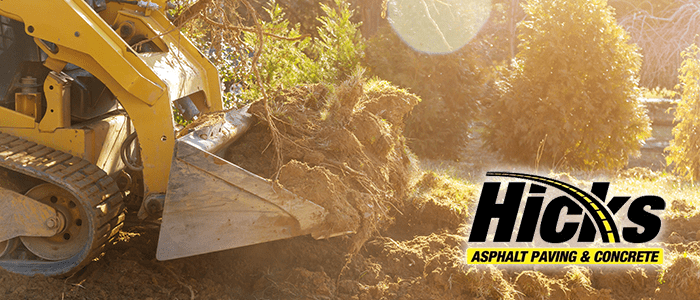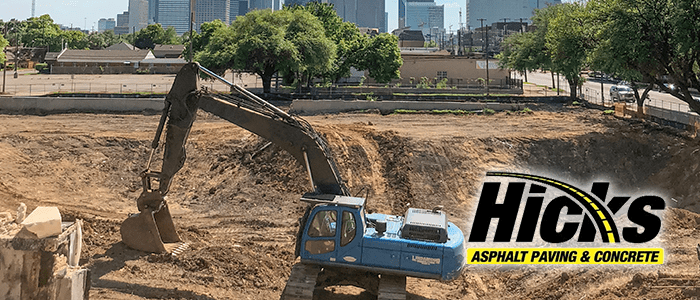We have previously talked about several different types of damage that your asphalt pavement can sustain. Today we continue by talking about several different varieties of the same type of damage – cracking. Cracking is one of the most widespread types of damage common in asphalt.
-
Block Cracking
Block cracking is easily identified by the consistent shapes of the cracks. They tend to be squares of circles of cracking in the pavement surface. This is common when the installer has used an older mix or a mix that was too dry when the asphalt was laid. Block cracking thankfully does not typically go deeper than the surface layers. This means that it can most likely be repaired with an asphalt overlay to fill in the resulting cracks.
-
Edge Cracking
Edge cracks are exactly what they sound like, cracks that appear along the outer edges of the asphalt and running parallel with the edge of the surface. Most often they are caused by water damage or erosion of the soil underneath. On the other hand, even the vegetation in the area can cause edge cracking. A simple crack seal can be used to great success in most cases. Although it is best to determine the cause of the cracking so that it can be corrected in order to prevent reoccurrence.
-
Fatigue Cracking
Fatigue cracking can be identified by its characteristic pattern. It is known to be a series of small cracks that resemble alligator hide. It can be caused by poor drainage, repeated use by heavy vehicles, or poor installation. Fatigue cracking tends to go deep into every layer of the asphalt surface. Because of this, repairing fatigue cracking typically requires cutting out the damaged areas and installing new, full-depth asphalt patches. Then, homeowners hope that this prevents any future cracking in the repaired areas.
-
Linear Cracking
These types of cracks are most common in large asphalt installations. In these projects, the asphalt is typically laid in sections or strips. If the joints between sections are not properly connected, these cracks will form in the joints. It can also be caused by asphalt shrinkage over time with exposure to repeated temperature fluctuations and moisture. These cracks will need to be filled with a combination of asphalt and sand.
-
Reflection Cracking
Reflection cracking is so called because it refers to surface cracking that reflects or mirrors the cracking in the sublayers. To repair these cracks, it is recommended to fill them with sealants and asphalt mixtures to prevent moisture from penetrating the surface and causing even more damage to the sublayers.
-
Slippage Cracking
Slippage cracks may appear almost like the asphalt is melting or slipping along the surface of the pavement. It can happen if the asphalt does not properly adhere to the sublayer or if the installer used too much sand in the asphalt mix. Slippage crack repair depends on the severity and depth of the cracks. They will likely need to be cut out and either full or partial depth patches will need to be applied.




